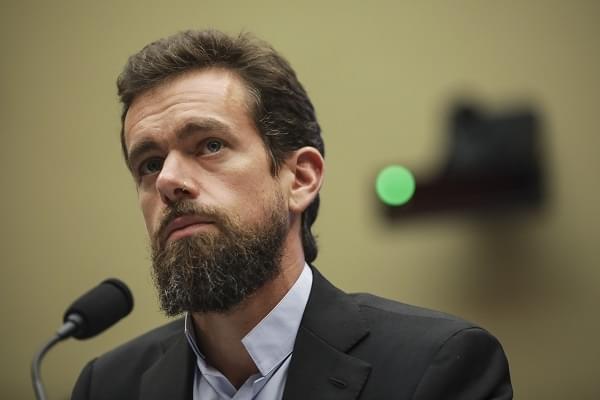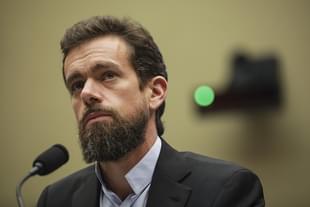Politics
Long Read: Modi Government Versus Twitter Must Be A Victory For Free Speech
Tushar Gupta
May 26, 2021, 11:00 AM | Updated 10:59 AM IST
Save & read from anywhere!
Bookmark stories for easy access on any device or the Swarajya app.


India will be home to one billion people online by 2023, and this is a formidable number. For social media companies, this is a market they would want to tap and improve their revenues. For publishers and other marketing experts, it means a huge digital market. For individuals, it is a space to voice their ideas and opinions and network.
However, for the ones with bigger clout across social media platforms, say the political parties and their leaders, it is a huge voter base to reach out to.
In India, social media platforms have now become a battleground for information wars. The recently surfaced toolkit alleged to have links with the Indian National Congress reflects the scale at which these battles are fought. They are a place to influence people, policies and politics.
The battle between the government of India and Twitter Inc, today, has reached an impasse. Twitter identifies itself as a company that has its own moderation policies and, therefore, is in a position to exercise editorial tyranny. For the government, it is about ensuring that Twitter acts in the spirit of free speech and acts like a publishing platform and not a selective editor.
The battle, however, as many would opine if Twitter does get banned, was never about allowing Bharatiya Janata Party (BJP) a fair voice, given this entire recent debate stemmed from the toolkit fiasco, but ensuring everyone has a fair voice.
Yes, the toolkit is a political battle, playing out on the digital information battlefield, but this is about asking Twitter to mind its business and not act as judge or jury in this battle, and let the stakeholders sort it out themselves.
The battle is not about allowing Sambit Patra a favourable voice, but ensuring that he or any other spokesperson of any party, big or small, national or regional, have an equal voice, equal access to their followers, and equal parameters from which they are judged when it comes to the content they share.
It is about ensuring a platform that does not become a policeman and reiterating that the law of the land supersedes the private tyranny of a company with a user base comparable to the population of many small countries.
Lastly, it is about ensuring that the voice of an elected representative in a nation of 1.3 billion people supersedes the voice of an unelected CEO. India has 530 million users on WhatsApp, 448 million users on YouTube, 410 million users on Facebook, 210 million users on Instagram, and merely 17 million people on Twitter, the platform in the centre of the cyclone, and therefore, selective censorship and labelling must be addressed before it is normalised.
Twitter’s worries are also amplified by the infamous history of its CEO, Jack Dorsey. On his visit to India in November 2018, Dorsey was happily posing with the staff of Twitter India, holding a poster that read ‘Smash Brahmanical Patriarchy’. Either Dorsey was clueless about what the poster meant or he was party to the hate campaign against Brahmins in his capacity as the CEO of one of the world’s biggest social media companies.
There is another parallel that must be factored in, that between the guidelines issued by the Ministry of Electronics and Information and Technology and the stance Dorsey took in January after the suspension of former US president Donald Trump’s Twitter account.
Defending his decision on Twitter, in an elaborate thread, Dorsey stated that the action was taken with the best information available. Citing the threats to safety, both online and offline, Dorsey made a case for Twitter’s arbitrary enforcement of its editorial policies.
Dorsey also elaborated on the precedent set by the suspension, confessing it was dangerous and would lead to individuals or corporations having control over the global public conversation. Mincing no words, Dorsey announced that anyone who disagreed with the rules and enforcement of Twitter was free to leave and choose another Internet service.
Dorsey’s thread also hinted at Big Tech coming together for a collective boycott, speaking about how some service providers were shying away from giving space to any app or website that qualified as dangerous. The actions of one platform can embolden the actions of others, he stated.
Dorsey, in repeated conversations after the suspension, stressed how a private social media company censoring content was not equivalent to government censorship, thus conveniently excusing himself from the lack of transparency in the suspension process.
Factoring in Twitter’s history with Trump and their recent actions in India, the problems are plenty. If the labelling of Patra’s tweet is normalised, what shall stop Twitter from enforcing its editorial policies before the elections of 2022, 2024, and beyond?
What if instead of simply labelling a tweet, Twitter India decides to censor those individuals, the ideology they represent, the party they came from? Where can Twitter be expected to draw the line, if at all they decide to draw one, and what if they do not draw one?
The question here is about ensuring that Big Tech’s interference in politics or policymaking is not normalised, but can the problem of social media giants regulating individual voice be solved by having the government regulating the social media platforms?
Absolutely not, and this is where the guidelines issued by the government come into play.
The guidelines were issued on 25 February 2021, two months after comments were invited for the public draft.
To address the elephant in the room of selective censoring, the guidelines propose that if any platform removes or disables access to any information on their own accord, a prior intimation for the same must be communicated to the user with a notice explaining the grounds and reasons for the action.
The guidelines also warrant an opportunity for the users to explain their actions or what they have posted. Thus, imagine the fiasco Twitter could have avoided by simply reaching out to Patra first. The guidelines also mention a grievance redressal mechanism through an officer appointed by the social media platforms.
This grievance officer is expected to publish a monthly report about the complaints addressed, and the details of the content removed. However, the guidelines do not mention the number of officers for a certain number of users. Clearly, one grievance officer cannot be expected to handle requests from a platform anywhere between 17.5 million to 410 million users?
The government missed a trick here. The idea should have been to have at least one grievance officer for every single million users. For social media platforms, citing delays and pending investigations or discussions is an easy way to dodge the bullet.
Think of it as being on a customer care call with a BSNL executive. You won’t get your telephone connection and lose access to connectivity simultaneously. Also, ensuring the accountability of the grievance officer is going to be as difficult as ensuring the transparency of the fact-checking process used by the platforms.
There is another problem here, that of removing information. The guidelines state that the platforms must not host or publish any information which is prohibited under any law in relation to the interest of the sovereignty and integrity of India, public order, friendly relations with foreign countries and so forth. The order for such removal may come from a court (from district to apex) or any government (state or Centre).
Here’s the problem. A lot many organisations received a similar order from the Maharashtra government when they were reporting on the migrant crisis after the first wave of Covid-19. While most publishers and individuals were exercising their freedom of speech by highlighting the mismanagement of the coalition, the office of the Chief Minister was attacking such publishers citing public order.
The above two guidelines pose a problem to free speech. While the other guidelines for social media platforms are certainly doable and indispensable going forward, it does not address the problem of repeated violations by the likes of Dorsey.
This is where the government can now take a cue from the state of Florida. The new law designed in the state warrants companies to explain their processes while censoring social media posts, and also allowing users legal recourse against the platforms.
Taking a lesson from Trump’s suspension, the law has a fine of $250,000 per day for companies suspending a Florida political candidate, and another $25,000 fine for non-statewide office candidates.
The government needs to ensure a hefty fine per day for every action of non-compliance. There needs to be some representation, auditing, and evaluation on the front of grievance redressal, and a fine must be in place for unresolved cases beyond a month, for starters. Unless there are monetary stakes, the social media companies will merely sit on these guidelines.
Two, banning any platform must be the last resort. To Twitter, a ban in India will amount to little difference in revenues but in the loss of a huge market. For a market this exuberant, Dorsey's basic understanding of economics is failing him completely.
To the government, the ban will not warrant an electoral backlash given there are only 17 million users in a nation of 1,300 million. Yet, banning should only follow a history of non-compliance, and given the scale at which these companies operate, the rope must not extend a year.
Even with the assumed tempers on both sides, to declare that Twitter will be banned later this week is an unnecessary exaggeration.
However, this is a government that did not shy away from showing TikTok the door and then not opening the same door for Huawei, and both these companies had far bigger implications from a political, economical and electoral point of view.
Make of it what you will.
Tushar is a senior-sub-editor at Swarajya. He tweets at @Tushar15_





